Native Plants
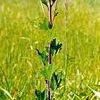
|
Common Name: Pale Indian Plantain
Soft yellow flower clusters bloom late summer into fall atop stiff stems on mesic to dry sites....
[ More Info ] [ Add to Shopping List ]
|
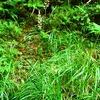
|
Common Name: Feather Reed Grass
Thin blades of lush foliage emerge in early Spring from the crowns and are soon joined by a column of tall, thin inflorescences. The inflorescences expand and sway in the Spring breezes, but quickly constrict to form narrow shafts of fruiting stalks,...
[ More Info ] [ Add to Shopping List ]
|
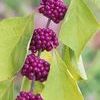
|
Common Name: American Beautyberry
Small pink blooms in summer are followed by clusters of bright purple berries in the fall. Berries color in late September or early October and remain until they are eaten by birds. Shrubs may die back to the ground in winter but will regrow from the...
[ More Info ] [ Add to Shopping List ]
|
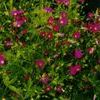
|
Common Name: Bush's Poppy Mallow
Native to Midwestern short grass prairies, this looks like a robust form of the trailing Purple Poppy Mallow with the same extended bloom time of wine-colored flowers but a slightly taller more upright habit....
[ More Info ] [ Add to Shopping List ]
|
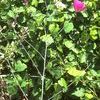
|
Common Name: Fringed Poppy Mallow
Fringed poppy mallow (or Standing Winecup) is a Midwest native perennial which most frequently occurs in dryish, rocky soils in prairies, meadows and limestone glades. Plants grow on erect, slender, branching stems which are covered with a bluish-whi...
[ More Info ] [ Add to Shopping List ]
|
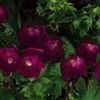
|
Common Name: Purple Poppy Mallow
Showy, cup-shaped magenta flowers bloom from June through frost. The trailing stems will hang over rocks or walls. This plant makes an excellent ground cover for sunny sites and can also be used in containers and cellular walls....
[ More Info ] [ Add to Shopping List ]
|
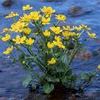
|
Common Name: Common Marsh Marigold
Beautiful wetland plant with shiny, dark green leaves and glossy yellow flowers....
[ More Info ] [ Add to Shopping List ]
|
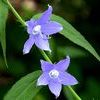
|
Common Name: Tall Bellflower
Tall Bellflower is the bright blue star in any woodland garden! An excellent "specimen plant," it makes its presence known in mid-summer. From the Campanulaceae family, its native range to the east central United States. Grand spires of blue, 5-point...
[ More Info ] [ Add to Shopping List ]
|
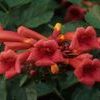
|
Common Name: Trumpet Creeper
Hummingbirds find this plant irresistable! They feed on nectar produced by clusters of orange-red trumpet-shaped flowers from July-September. This woody vine attaches to any surface with rootlike holdfasts. Lustrous dark green leaves form a good scre...
[ More Info ] [ Add to Shopping List ]
|
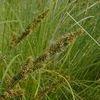
|
Common Name: Large Yellow Fox Sedge
This native perennial plant is about 2-3' tall, forming tight tufts of leaves and flowering culms. Yellow Fox Sedge is attractive because of its yellow spikelets of flowers and compact tufts of fine leaves. It is similar in appearance to the common C...
[ More Info ] [ Add to Shopping List ]
|
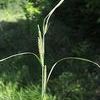
|
Common Name: Water Sedge
An evergreen perennial, this sedge grows in large, or more often small clumps. This plant likes alkaline conditions and is found naturally in areas of wet, calcareous soils, such as fens and certain stream banks....
[ More Info ] [ Add to Shopping List ]
|
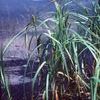
|
Common Name: Slough Sedge
An attractive tussock-forming perennial sedge that lives in marshes, swamps, wet meadows, ditches, stream and pond margins, usually in shallow water. Uncommon in Missouri, but often locally abundant and aggressive throughout its range, this species ...
[ More Info ] [ Add to Shopping List ]
|
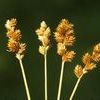
|
Common Name: Bebb's Sedge
Found mostly in moist sun or semi-shade. Wooded borders and clearings are its natural habitat....
[ More Info ] [ Add to Shopping List ]
|
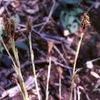
|
Common Name: Copper Oval Sedge
This perennial tussock-forming sedge can grow in slightly drier habitats than most sedges. It has silvery-brown to green flower spikes from May to June that grow up to 3 feet tall that contain brown fruit/seeds. Copper Oval Sedge grows in old field...
[ More Info ] [ Add to Shopping List ]
|
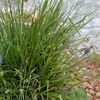
|
Common Name: Eastern Woodland Sedge
Eastern Woodland Sedge is adapted to grow in shaded areas that are somewhat drier than what most sedges prefer. This perennial species grows in bunches and has green flowers that turn into brown fruit from April through June. Its leaves are up to 1...
[ More Info ] [ Add to Shopping List ]
|
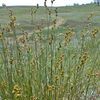
|
Common Name: Shortbeak Sedge
Low-growing sedge for dry open areas. Native occuring from Canada to Mexico. Flowers April - May. Small, yellowish-brown fruits appears mid summer. Carex brevior is often confused with C. molesta and C. festucacea....
[ More Info ] [ Add to Shopping List ]
|
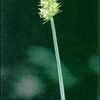
|
Common Name: Oval Leaf Sedge
Short sedge of dry woodlands and fields. Flower spikelets bloom from May through July. Provides food for waterfowl....
[ More Info ] [ Add to Shopping List ]
|
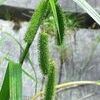
|
Common Name: Longhaired Sedge
This large clumped sedge lives in shallow water, sedge meadows, marshes, and ditches. It requires perennially wet ground to grow. Longhaired Sedge has an erect growth pattern and it blooms in mid-summer. This species can be easily identified by th...
[ More Info ] [ Add to Shopping List ]
|
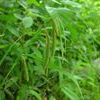
|
Common Name: Fringed Sedge
This distinctive sedge flowers from May to July and has very slender erect male flowers that are separate from the characteristic long drooping narrow female flowers. Fringed Sedge grows in dense clumps in wet meadows, swamps, sloughs, moist upland ...
[ More Info ] [ Add to Shopping List ]
|
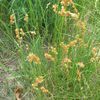
|
Common Name: Crested Sedge
Crested Sedge forms large clumps of vegetative growth which can be used as ground cover in moist areas. This species grows in colonies in full sunlight on moist ground but not in standing water more than approximately 2 inches in depth. Crested Sed...
[ More Info ] [ Add to Shopping List ]
|
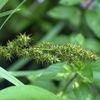
|
Common Name: Crowfoot Fox Sedge
Crowfoot Fox Sedge is found in swamps, bottomland forests, stream and river banks, and moist prairies. It grows in moist ground but is sometimes found in shallow standing water. The bristly flowers in large compound inflorescences, which appear fro...
[ More Info ] [ Add to Shopping List ]
|
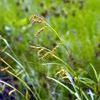
|
Common Name: Davis Sedge
Davis Sedge is a good choice for wet woods, moist prairies, and river and stream banks. This plant is located across Missouri except in the Bootheel lowlands and in some parts of the southern Ozarks. It forms dense clumps and has sharply triangular...
[ More Info ] [ Add to Shopping List ]
|

|
Common Name: Ebony Sedge
Short fragile, bunch-forming sedge of moist meadows. Very narrow and wiry leaves and stems....
[ More Info ] [ Add to Shopping List ]
|
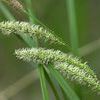
|
Common Name: Emory's Sedge
A wetland native that forms dense tussocks of straw-colored leaves at the base with bright green new growth emerging from the top. An emergent aquatic, this sedge tolerates full sun to part shade and thrives in wet to moist soil. Narrow, grass-like l...
[ More Info ] [ Add to Shopping List ]
|
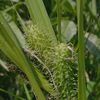
|
Common Name: Frank's Sedge
Frank's Sedge grows best in very wet ground. It occurs naturally in bottomland forests, edges of streams and ponds, wet prairies, and moist areas on the edge of roadsides and crop fields. This sedge is common throughout Missouri except in the north...
[ More Info ] [ Add to Shopping List ]
|
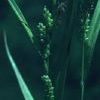
|
Common Name: Meadow Sedge
Meadow Sedge is adapted to very wet soils. It is found in bottomland forests, swamps, wet prairies, moist areas in upland prairies, calcareous glades, and wet open ground. This species is common throughout Missouri except in the northwest corner. ...
[ More Info ] [ Add to Shopping List ]
|
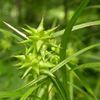
|
Common Name: Gray's Sedge
Gray's Sedge has become a commonly used ornamental sedge, which is prized for its unique nut-sized flower spikes, densely clumped foliage, and its tolerance of shade. It is naturally found in bottomland forests, swamps, banks of streams and lakes, a...
[ More Info ] [ Add to Shopping List ]
|
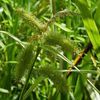
|
Common Name: Bottlebrush Sedge
Bottlebrush sedge gets its name from its characteristic flower spikes which are present from June to August. This species is a good choice for stream banks, pond edges, and swales, especially in calcareous areas. Bottlebrush sedge forms clumps and ...
[ More Info ] [ Add to Shopping List ]
|
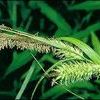
|
Common Name: Lake Bank Sedge
Lake Bank Sedge is a great choice for plantings on the shores of lakes and ponds. It spreads through rhizomes to form colonies and helps with erosion control. The leaves are a bluish-green color and have a reddish tinge near the triangular base of ...
[ More Info ] [ Add to Shopping List ]
|
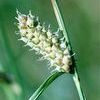
|
Common Name: Wooly Sedge
Wooly Sedge prefers moist soil but will tolerate up to 6 inches of inundation in Spring. It is found naturally in bottomland prairies, moist areas in upland prairies, fens, marshes, and the edge of bottomland forests. Wooly Sedge forms clumps, lack...
[ More Info ] [ Add to Shopping List ]
|
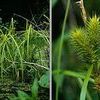
|
Common Name: Hop Sedge
This unique-looking perennial sedge produces light green flowers from June through August that are shaped like hops or pineapples. Hop sedges like very wet soils and common habitats include wet woods, swamps, wet prairies, moist depressions in upla...
[ More Info ] [ Add to Shopping List ]
|
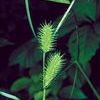
|
Common Name: Lurid Sedge
Lurid Sedge forms dense clumps and is found naturally in river banks, moist prairies, wet areas in upland prairies, pond margins, marshes and other wet areas. This is a good species for sedge meadow restoration projects. Its stems are bluntly trian...
[ More Info ] [ Add to Shopping List ]
|
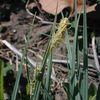
|
Common Name: Mead's Sedge
Mead's Sedge is adapted to grow in and out of wetlands. It is often found on drier sites on calcareous soils, but is also found in moist habitats such as wet meadows. Individuals that grow in a drier setting tend to be shorter and more upright than...
[ More Info ] [ Add to Shopping List ]
|
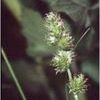
|
Common Name: Troublesome Sedge
Common sedge which adapts to a wide variety of habitats, including wet to dry-mesic prairies, open woodlands, swamps, thickets, abandoned or disturbed fields and roadside ditches. Despite the negative name,it is an attractive sedge with tight bunches...
[ More Info ] [ Add to Shopping List ]
|
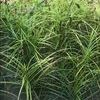
|
Common Name: Palm Sedge
Muskingum Sedge, or Palm Sedge, is a distinctive sedge that has abundant uniquely palm-shaped leaves and large slender flowering spikes. It is a good choice for ground cover in wet locations. Its leaves forms small clumps through its short rhizomes. ...
[ More Info ] [ Add to Shopping List ]
|
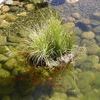
|
Common Name: Nebraska Sedge
Nebraska Sedge is found in wet meadows and disturbed riparian areas. It is adapted to alkaline soils. This species has long rhizomes and forms small and occasionally large clumps with the previous year's leaves remaining at the base of the plant. ...
[ More Info ] [ Add to Shopping List ]
|
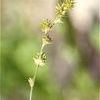
|
Common Name: Spreading Oval Sedge
Spreading Oval Sedge is found in bottomland forests, wet prairies, moist areas in upland prairies, streambanks and pond margins, as well as roadsides and ditches. This species has light green to green foliage and flowers from May to July with the mal...
[ More Info ] [ Add to Shopping List ]
|
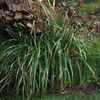
|
Common Name: Drooping Sedge
This hardy sedge is slow to establish. However, with a constant supply of moisture, Drooping Sedge will develop into an imposing, dark green plant with dramatic 4 - 5" long brown flowers. The drooping refers to the blossoms rather than the foliage. E...
[ More Info ] [ Add to Shopping List ]
|
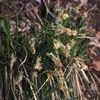
|
Common Name: Pennsylvania Sedge
Pennsylvania Sedge is one of only a few sedges adapted to upland conditions. It is naturally found in dry to moist upland forests, shady bluffs, and occasionally in upland prairies. Pennsylvania Sedge has long rhizomes and forms a loose to dense gr...
[ More Info ] [ Add to Shopping List ]
|
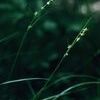
|
Common Name: Rosy Sedge
Rosy Sedge forms thick tufts or clumps in bottomland forests and wet areas in upland forests. It is also occasionally found along moist streambanks and the edges of fens. This petite species has short rhizomes and small rounded spikelets of flowers...
[ More Info ] [ Add to Shopping List ]
|
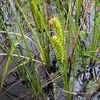
|
Common Name: Beaked Sedge
Beaked Sedge is a large sedge that is naturally found in swamps, wet meadows, marshes, and wet margins of ponds and streams. This species has a light green color and retains some old growth at the bottom of the plant. The stalks are spongy and thic...
[ More Info ] [ Add to Shopping List ]
|
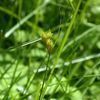
|
Common Name: Blunt Broom Sedge
Blunt Broom Sedge is a native, perennial plant that thrives in wet prairies, bottomland prairies, upland prairies, around ponds and marshes, and in roadside ditches throughout most of the state. It is an erect plant that grows in clumps or tufts to ...
[ More Info ] [ Add to Shopping List ]
|
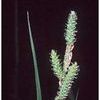
|
Common Name: Short's Sedge
Short's Sedge is a good choice for wetland restoration projects. This common species occurs naturally in wet meadows, moist prairies, swamps, bottomland forests, and along the banks of ponds and streams. Its characteristic upright seedheads appear ...
[ More Info ] [ Add to Shopping List ]
|
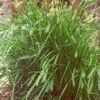
|
Common Name: Long-beaked Sedge
Narrow, grass-like bright green leaves arch gracefully from a central clump. Spikelets are pendant and attractive. Useful in diversifying the species and texture of a woodland garden. Blooms in spring in moist, deciduous woods and savanna areas....
[ More Info ] [ Add to Shopping List ]
|
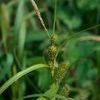
|
Common Name: Narrow Leaf Cattail Sedge
Narrow Leaf Cattail Sedge is a good choice for water gardens as it forms small clumps and lives in such habitats as wet forests, swamps, bottomland prairies, pond edges, marshes and waste places. Individuals either have male or female flowers from A...
[ More Info ] [ Add to Shopping List ]
|
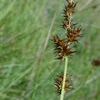
|
Common Name: Awl-Fruited Sedge
This common perennial sedge has characteristic spike-like green flowers (male flowers below the female flowers), which become brown as the seeds develop. The reproductive structures are present from May-July. This species is found in a wide diversi...
[ More Info ] [ Add to Shopping List ]
|
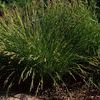
|
Common Name: Tussock Sedge
Rich green, fine-bladed leaves form dense mounds or "tussocks." Useful for water gardens, swales, around the edge of ponds or streams or in moist soil as a ground cover....
[ More Info ] [ Add to Shopping List ]
|
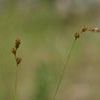
|
Common Name: Narrow Leaf Oval Sedge
Narrow Leaf Oval Sedge is a perennial sedge that grows in moist woodlands, along streambanks, and in floodplains. It is native to the North Central and Northeastern United States. This sedge is a versatile plant, growing in full sun or partial shad...
[ More Info ] [ Add to Shopping List ]
|
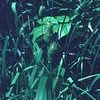
|
Common Name: Cattail Sedge
Cattail Sedge is a clump-forming sedge native to Missouri. It is found in deciduous forested wetlands and wet prairies. It grows in moist to wet conditions in full sun to part shade. Cattail Sedge flowers from April to September, producing 1-6 cyl...
[ More Info ] [ Add to Shopping List ]
|
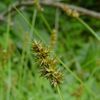
|
Common Name: Fox Sedge
This attractive perennial sedge is very common throughout Missouri and the U.S.
This species colonizes readily and is found in bottomland prairies, moist areas in dry prairies, pond and lake margins, along streams, and in virtually all wetland habi...
[ More Info ] [ Add to Shopping List ]
|
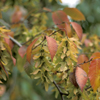
|
Common Name: American Hornbeam
A very handsome small to medium tree with multiple stems that forms wide, horizontal canopy. Dark green leaves can be yellow, orange, red or purple in fall. Beautiful thin, blue-gray bark. The seed is eaten by songbirds, quail and turkey. Whitetail d...
[ More Info ] [ Add to Shopping List ]
|
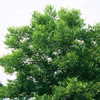
|
Common Name: Pecan
The largest member of the hickory family, the Pecan is native to the rich, moist soils of the bottomlands, especially of the Mississippi Valley. The Pecan becomes a tall straight tree with a symmetrical, broadly oval growth habit. Trees begin bearing...
[ More Info ] [ Add to Shopping List ]
|
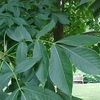
|
Common Name: Big Shagbark Hickory
This uncommon species is distinguished from other hickories by the large leaves, nuts, and orange twigs. Found in moist or wet soils of flood plains and valleys with other hardwoods. Best grown in humus rich, medium to wet soils in full sun to part...
[ More Info ] [ Add to Shopping List ]
|
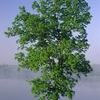
|
Common Name: Shagbark Hickory
A large tree of great character, the Shagbark Hickory is found on a broad variety of natural sites making it a highly adaptable species for landscape use. The gray to brown bark peels off in thin sections, curling at the ends while staying attached i...
[ More Info ] [ Add to Shopping List ]
|
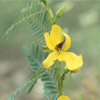
|
Common Name: Partridge Pea
A showy annual legume with beautiful featherlike leaves and bright yellow flowers all summer. The fruit is a small flat pod that is an excellent food source for quail and many other birds. Grows well on poor ground....
[ More Info ] [ Add to Shopping List ]
|
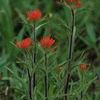
|
Common Name: Indian Paintbrush
Bright red flower clusters for many weeks in spring and early summer. Excellent butterfly and hummingbird nectar food source. Indian Paintbrush is best established in a complex prairie environment because it is difficult to propagate and transplant. ...
[ More Info ] [ Add to Shopping List ]
|
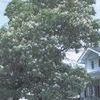
|
Common Name: Northern Catalpa
Northern Catalpa is a medium to large, deciduous tree that typically grows with an irregular, open-rounded to narrow-oval crown. It typically occurs along streams, bluff bases and in both low and upland woods.Large, broad oval to oblong leaves are li...
[ More Info ] [ Add to Shopping List ]
|
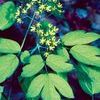
|
Common Name: Blue Cohosh
Blue Cohosh is a native perennial which grows on strong, upright stems. It is valued for its lacy, ternately-compound, blue-green foliage and its erect clusters of blue, fruit-like seeds. Leaves appear at mid-stem, emerging a smoky blue in spring and...
[ More Info ] [ Add to Shopping List ]
|
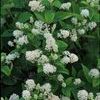
|
Common Name: New Jersey Tea
A slow-growing, compact shrub that's excellent for hot, dry sites and for atttracting wildlife. Billows of delicate white flowers in May and June attract butterflies, insects and hummingbirds. Clusters of small black fruit form in July and August....
[ More Info ] [ Add to Shopping List ]
|
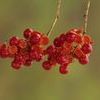
|
Common Name: American Bittersweet
Hanging clusters of bright red-orange fruit open in the fall. A variety of wildlife eat the berries. Plants are male or female and both sexes are needed for fruit set. This twining woody vine will grow vertically or sprawl horizontally over bushes an...
[ More Info ] [ Add to Shopping List ]
|
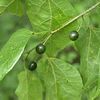
|
Common Name: Sugarberry
Sugarberry is a common large overstory tree in bottomland forests but also occurs in drier areas over calcareous rock with relatively high pH soil.
The leaves are normally easily identified by their almost triangular shape with uneven bases with ...
[ More Info ] [ Add to Shopping List ]
|
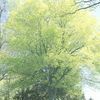
|
Common Name: Hackberry
A reliable, fast-growing, all-purpose shade tree which is pyramidal when young then develops a broad crown with ascending branches. The leaves are medium green. Fall foliage is a soft yellow. Birds and wildlife relish the small, round, orange-red or ...
[ More Info ] [ Add to Shopping List ]
|
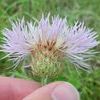
|
Common Name: American Basket Flower
From May to August, this easy to grow annual blooms with flowers that have a cream colored center with bright purple edges that close at night. Interestingly there is an interwoven pattern below the petals, which gives the plant its common name....
[ More Info ] [ Add to Shopping List ]
|
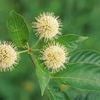
|
Common Name: Buttonbush
Hundreds of ball-shaped, creamy white flowers dangle from the bush in August. Butterflies and insects find the nectar irresistable. The nutlike seeds are eaten by many waterfowl and many types of birds use it as a nesting site. Found in low, wet wood...
[ More Info ] [ Add to Shopping List ]
|
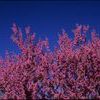
|
Common Name: Eastern Redbud
Bare branches are smothered in thousands of dark pink flowers in early spring. Red-purple, pea-shaped seed pods follow the flowers but are of insignificant value to wildlife. Heart-shaped leaves become a quilt of yellow and green in fall. This native...
[ More Info ] [ Add to Shopping List ]
|
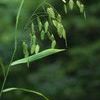
|
Common Name: Northern Sea Oats
Upright clumps of green leaves turn copper in fall and brown in winter. Attractive flat seed heads are good in fresh or dried arrangements. Prefers light shade and damp soil. Can self-sow prolifically. Good ground cover in moist areas....
[ More Info ] [ Add to Shopping List ]
|
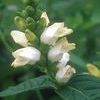
|
Common Name: Turtlehead
Erect, leafy stems with clusters of white snapdragon-like blossoms. Naturally occurs along streambanks, swampy areas and moist woods....
[ More Info ] [ Add to Shopping List ]
|
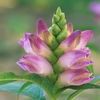
|
Common Name: Rose Turtlehead
Dense spikes of rose-red flowers bloom in late summer and early fall. Butterflies are attracted to the nectar. The deep green, glossy foliage is handsome all season long. Rose Turtlehead grows best in full sun and moist soil and is a great choice for...
[ More Info ] [ Add to Shopping List ]
|
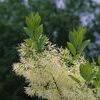
|
Common Name: Fringetree
Shimmering, white fringed flowers cover this plant in May or June followed by small, round, bluish olive-shaped fruit on female trees in fall. The fruits are eaten by many types of birds. Leaves often turn bright yellow in fall. Fringetree is found a...
[ More Info ] [ Add to Shopping List ]
|

|
Common Name: Shasta Daisy
Shasta Daisies form dense colonies once established. Native to Europe, it has naturalized throughout all regions of the United States. The white petalled flowers with golden yellow centers are borne individually on single erect stems. Compared to its...
[ More Info ] [ Add to Shopping List ]
|
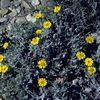
|
Common Name: Hairy Golden Aster
Shrub-like perennial with hairy grey-green foliage topped with disks of ray flowers. Drought resistant and typically found in dry, rocky soils of prairies and plains. The Cheyenne Indians used the tops and stems to make a soothing tea to aid in sle...
[ More Info ] [ Add to Shopping List ]
|
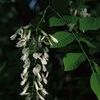
|
Common Name: Yellowwood
An excellent, medium sized specimen tree, with light green compound leaves turning gold in fall. Spectacular 8-14" long panicles of fragrant, creamy-white flowers bloom in May and hang down from the branches. The bark is very smooth and gray. This i...
[ More Info ] [ Add to Shopping List ]
|
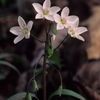
|
Common Name: Spring Beauty
Small, five-petalled, pinkish-white flowers bloom in loose, open clusters from February through May. Plants will naturalize and form colonies over time, giving a soft, carpet-like effect. Like other ephemerals, plants become dormant after they bloom ...
[ More Info ] [ Add to Shopping List ]
|
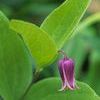
|
Common Name: Fremont's Leather Flower
A non-climbing clematis with erect stems formning a dense clump once plants are established. The handsome, leathery green fliage is topped with purple to white, bell-shaped flowers from May to June followed by attractive seed heads....
[ More Info ] [ Add to Shopping List ]
|
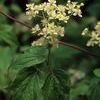
|
Common Name: Virgin's Bower
Abundant clusters of fragrant creamy white flowers bloom in August and September attracting butterflies and other pollinators. Female plants produce lots of silky seed heads. The foliage is bright green. Plants climb by twisting tendrils around objec...
[ More Info ] [ Add to Shopping List ]
|
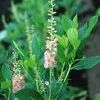
|
Common Name: Summersweet
Highly fragrant. One shrub will perfume the entire garden with a spicy-sweet fragrance that is especially noticeable in the evening. In mid-summer, dramatic four to six inch, fluffy flower spikes attract hummingbirds and butterflies. Dark brown seed ...
[ More Info ] [ Add to Shopping List ]
|
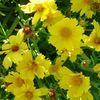
|
Common Name: Big Flower Coreopsis
This large showy perennial with bright and cheery golden ray flowers has a place in every natural garden! The plant is easy to identify in the field because of its finely divided leaves and big, all-yellow flowers....
[ More Info ] [ Add to Shopping List ]
|
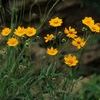
|
Common Name: Lanceleaf Coreopsis
Golden yellow flowers on tall, delicate stems usually less than 2 feet in height in May and June. Lanceleaf Coreopsis is a good cut flower and an excellent choice for most gardens. Deadheading, or cutting back spent flowers can extend blooming. You m...
[ More Info ] [ Add to Shopping List ]
|
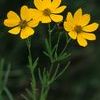
|
Common Name: Prairie Coreopsis
Soft yellow, daisy-like flowers on stiff upright stems bloom from late spring to mid-summer. Prairie Coreopsis makes a good cut flower and seed source for birds. It spreads by rhizomes and self-seeding....
[ More Info ] [ Add to Shopping List ]
|
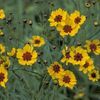
|
Common Name: Plains Coreopsis
Lots of yellow flowers with red centers bloom from from June to September. Flowers are usually 1" across and very showy making this an excellent choice for Midwest gardens. Nicely textured leaves are deeply divided into narrow leaflets. This is a goo...
[ More Info ] [ Add to Shopping List ]
|
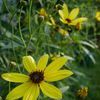
|
Common Name: Tall Coreopsis
This coreopsis is the last one to bloom. It is easily grown in dry to medium wet, well-drained soil in full sun. It can also thrive in poor, sandy or rocky soils but will produce shorter plants that are open and somewhat spindly. Plants grown in med...
[ More Info ] [ Add to Shopping List ]
|
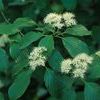
|
Common Name: Pagoda Dogwood
In May or June, flat-topped clusters of fragrant, yellowish white flowers are followed by handsome blue-black berries on red stems. This spreading, low-branched tree has an attractive horizontal habit. The foliage is burgundy in fall. In northern a...
[ More Info ] [ Add to Shopping List ]
|
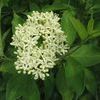
|
Common Name: Silky Dogwood
An underutilized dogwood that develops into a medium to large rounded shrub with yellowish white flowers and blue drupes. Excellent for streambank stabilization and conservation plantings....
[ More Info ] [ Add to Shopping List ]
|
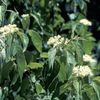
|
Common Name: Roughleaf Dogwood
This hardy shrub or small tree produces flat clusters of tiny white flowers in late spring. The medium green leaves turn a beautiful burgundy in early fall. The summer fruit is white and is an important food source for birds and a number of mammals. ...
[ More Info ] [ Add to Shopping List ]
|
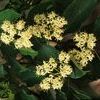
|
Common Name: Gray Dogwood
Clusters of small white flowers May and July give way to small white berries on short red stalks. The green foliage turns burgundy in fall. Like all dogwoods, this is a good source of food, cover and nesting sites for many birds. This many-stemmed sh...
[ More Info ] [ Add to Shopping List ]
|
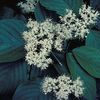
|
Common Name: Redosier Dogwood
Redoiser or red-twig dogwood is a multi-stemmed shrub with red twigs. Flat-topped clusters of white blossoms are followeed by clusters of small white berries. Works well in natural plantings in moist soils where it will be allowed to spread. Also ...
[ More Info ] [ Add to Shopping List ]
|
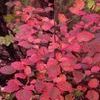
|
Common Name: American Filbert
A deciduous multi-stemmed shrub with dark green leaves that forms a rounded thicket. In spring, 2-3 inch long, yellow-brown catkins bloom. In July, female flowers mature into egg-shaped, 1/2 in. long, edible nuts which taste like European filberts an...
[ More Info ] [ Add to Shopping List ]
|
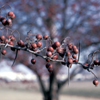
|
Common Name: Cockspur Hawthorn
A small tree developing a flattened crown with long horizontal branches. Clusters of white flowers bloom for 10 days and are followed by deep red berries that persist into late fall or winter. The fruit is great for wildlife food and the 2-inch thor...
[ More Info ] [ Add to Shopping List ]
|
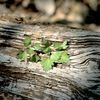
|
Common Name: Parsley Hawthorn
Very ornamental with parsley-like foliage, though the leaves are larger than those of real parsley. White flowers in spring and beautiful small, oblong bright red berries lovwed by wildlife. The official Missouri state flower is the hawthorn....
[ More Info ] [ Add to Shopping List ]
|
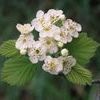
|
Common Name: Downy Hawthorn
An attractive, rounded to wide-spreading tree with nearly thornless branches. The branches and bark are gray and quite different from most hawthorns. Clusters of showy white 1" flowers bloom in late April or early May. One of the earliest hawthorns t...
[ More Info ] [ Add to Shopping List ]
|
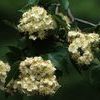
|
Common Name: Washington Hawthorn
A broadly oval tree with lustrous dark green leaves. The young foliage is purple and fall color is orange, red or purple. This is the last hawthorn to flower with 1/2-inch white flowers in early June. The glossy red fruit is 1/4" in diameter and per...
[ More Info ] [ Add to Shopping List ]
|
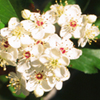
|
Common Name: Green Hawthorn
In mid-May, clusters of white flowers are followed by bright red berries in September on this thornless hawthorn, a landscape beauty. The medium-green foliage turns purple or scarlet in fall and the beautiful globe-shaped fruit lasts almost all wint...
[ More Info ] [ Add to Shopping List ]
|
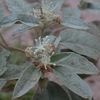
|
Common Name: Hogwort
Hogwort grows in sandy prairies, openings and waste places. This upright, multi-branched annual native has grayish-green hairy stems that branch at the nodes. The leaves are a narrow lance shape, one to four inches long. The small, green, male flower...
[ More Info ] [ Add to Shopping List ]
|
